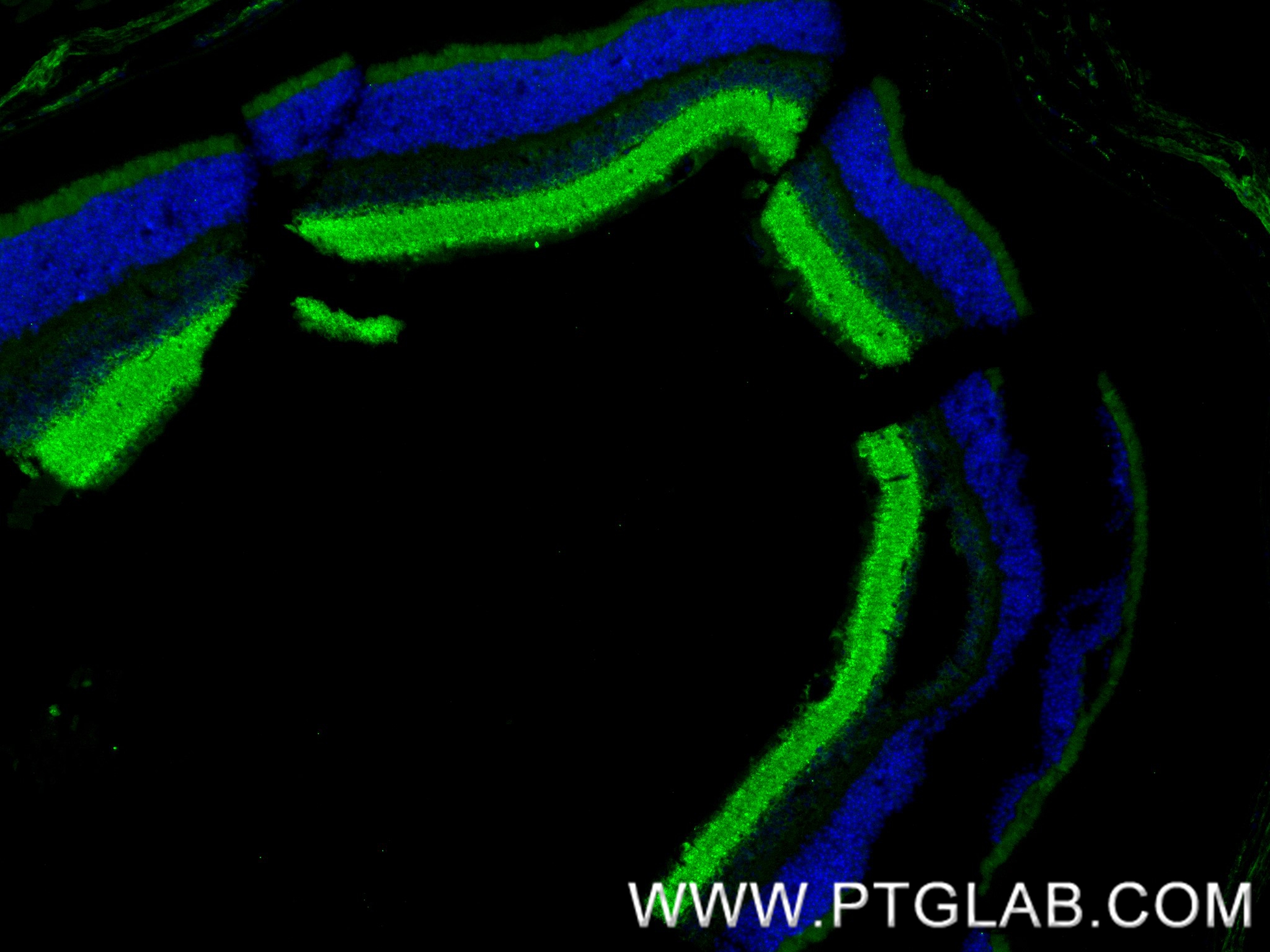验证数据展示
经过测试的应用
| Positive WB detected in | IMR-32 cells, SH-SY5Y cells, SK-N-SH cells |
| Positive IF-P detected in | mouse retina tissue |
推荐稀释比
| 应用 | 推荐稀释比 |
|---|---|
| Western Blot (WB) | WB : 1:5000-1:50000 |
| Immunofluorescence (IF)-P | IF-P : 1:200-1:800 |
| It is recommended that this reagent should be titrated in each testing system to obtain optimal results. | |
| Sample-dependent, Check data in validation data gallery. | |
产品信息
85360-1-RR targets SYN1-Specific in WB, IF-P, ELISA applications and shows reactivity with human, mouse samples.
| 经测试应用 | WB, IF-P, ELISA Application Description |
| 经测试反应性 | human, mouse |
| 免疫原 | Peptide 种属同源性预测 |
| 宿主/亚型 | Rabbit / IgG |
| 抗体类别 | Recombinant |
| 产品类型 | Antibody |
| 全称 | synapsin I |
| 别名 | SYN1, Synapsin I, 242415H5, Brain protein 4.1, SYN1a |
| 计算分子量 | 74 kDa |
| 观测分子量 | 70-80 kDa |
| GenBank蛋白编号 | NM_006950 |
| 基因名称 | SYN1 |
| Gene ID (NCBI) | 6853 |
| 偶联类型 | Unconjugated |
| 形式 | Liquid |
| 纯化方式 | Protein A purification |
| UNIPROT ID | P17600 |
| 储存缓冲液 | PBS with 0.02% sodium azide and 50% glycerol , pH 7.3 |
| 储存条件 | Store at -20°C. Stable for one year after shipment. Aliquoting is unnecessary for -20oC storage. |
背景介绍
SYN1, also named Brain protein 4.1, belongs to the synapsin family. SYN1 is a neuronal phosphoprotein that coats synaptic vesicles, binds to the cytoskeleton, and is believed to function in the regulation of neurotransmitter release. The complex formed with NOS1 and CAPON proteins is necessary for specific nitric-oxid functions at a presynaptic level. Defects in SYN1 are a cause of epilepsy X-linked with variable learning disabilities and behavior disorders (XELBD).
实验方案
| Product Specific Protocols | |
|---|---|
| WB protocol for SYN1-Specific antibody 85360-1-RR | Download protocol |
| IF protocol for SYN1-Specific antibody 85360-1-RR | Download protocol |
| Standard Protocols | |
|---|---|
| Click here to view our Standard Protocols |

